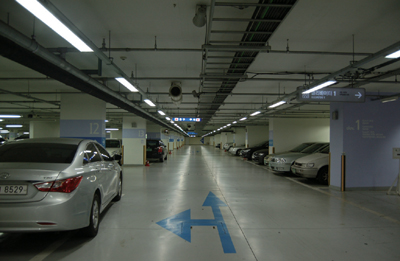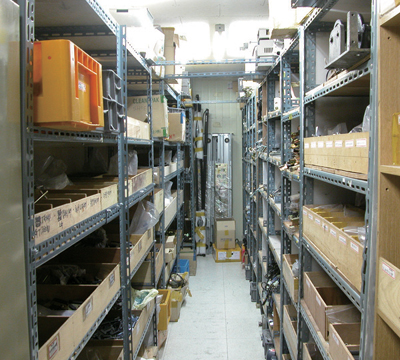|
|
|
Parking Lot Market Conditions, 'Is It Getting Better? Small businesses apply for 234 items, September selection results announced 2011/07  Recently, entrepreneurs have been buzzing with discussions about shared growth to resolve social conflicts between large and small businesses. This is because the government is actively promoting the shared growth policy between large and small companies to advance the economy and create a sustainable growth engine. However, there are many obstacles to overcome in order for the culture of shared growth to take root in every industry. Therefore, on September 29 last year, the Shared Growth Committee was formed as part of the 'Shared Growth Promotion Measures' at the Shared Growth Strategy Meeting for Large and Small Enterprises. The Committee for Shared Growth (Chairman Jung Un-chan, hereinafter referred to as the Committee) is a private organization that seeks to strengthen national competitiveness by identifying social conflicts and resolving polarization in order to create a virtuous cycle of cooperation between large and small businesses. Led by former Prime Minister Chung Un-chan, the Council, which seeks to voluntarily implement and spread shared growth through private sector consensus, was launched on December 13 last year and is composed of 25 civilians without government members. It aims to act as a mediator to reach a consensus in the private sector to mutually benefit both large and small businesses. The committee presented the 'SME Suitable Businesses - Guidelines for Item Selection and Operation' at a public hearing on April 22, and received applications for SMEs from May 3 to 27. The number of applications was 1,129 industries and 234 items. The number of applications greatly exceeded the initial expectation of 50 applications for SMEs, and most of them were from industries that are struggling in the market coexisting with large companies, such as mechanical parking lots, whose market has shrunk significantly due to the prolonged recession in the construction industry, food products such as tofu and rice wine, ready-mixed concrete, and LEDs. Applicants were required to apply jointly by SME cooperatives, business organizations, or five or more companies that produce the item in question for the manufacturing sector, excluding SME service businesses (including distribution). The following is the status of applications by industry (item). Food: 46 items including kimchi, soy sauce, miso, gochujang, tofu, takju, green tea, bean sprouts, etc. Textile: 20 items including fiber yarn dyeing, fabric dyeing, string and rope, etc. Chemical: 22 items including industrial gases such as hydrogen, laundry soap, surfactants, antifreeze, etc. Petrochemicals: 13 items including retreaded tires, plastic pipes, plastic bottles, polyethylene film, etc. Non-metal: 12 items including ready-mixed concrete, asphalt, glass containers, concrete blocks, etc. Metal: 33 items including plated steel pipes and covered steel pipes, zinc powder, castings, forgings, special steel, plating, sheet metal products, etc. Electronics: 10 items including desktop PCs, car dash cameras, satellite broadcasting receivers, closed-circuit cameras, etc. Medical: 11 items including navigation, optical lenses, sunglasses, eyeglass frames, etc. Electricity: 22 items including transmission and distribution transformers, LED lights, lighting devices, ion water purifiers, and household electric cleaners Machinery: 31 items including press molds, molds for plastics, various valves, parking machines, industrial refrigerators, water purifiers, etc. Other (wood and wood product manufacturing (except furniture), pulp, paper and paper product manufacturing, printing and recording media reproduction, and other product manufacturing): 14 items, including other passenger toys, prefabricated toys, other toys, dolls and toy parts, flooring materials, corrugated cardboard boxes, etc. SME Eligible Business and Item System, 'Different from the Unique Business System' The SME eligible business and item system is similar to the SME unique business system, which was abolished in 2006. The SME Distinctive Business System was introduced in 1979 as a proactive safeguard to protect the stable business areas of SMEs and lasted for 27 years until 2006. According to the Ministry of Trade and Industry, the system was abolished by gradually reducing the number of industries designated as unique due to various adverse effects. This was due to the rapid changes in social and economic conditions, which made it difficult to distinguish between large and small enterprises; the establishment and operation of a number of small and medium-sized subsidiaries by some SMEs to continue to benefit from the SME program rather than grow into medium-sized enterprises; and the lack of technological and quality improvement as some of the SMEs in the unique industry focused on price competition rather than technology and quality competition, which led to the entry of foreign products into the domestic market. In addition, the government allowed large companies that had entered the market before the designation of unique industries to continue production while restricting the participation of new large companies, effectively condoning the monopolistic market performance of existing large companies. "The abolition of the unique business type system was not because there was a problem with the system itself," said an official from the Sangguk Committee at a panel discussion. "It was abolished in the 2000s when neoliberalism entered the country and was driven by the economic logic of openness and deregulation." "As a result, large companies were able to enter any industry, and SMEs faced the problem of declining competitiveness and profitability due to the loss of regulatory protection, so the government had a business adjustment system that could be adjusted after the fact, but it was ineffective because it was only a recommendation," he said. In the end, the abolition of the SME unique business classification system led to a deterioration in the SME environment and a large number of large companies entering the SME sector, resulting in many SMEs struggling. To compensate for this, the SME Suitable Industry and Product System is intended to introduce minimal regulations. SME Suitable Businesses Guidelines Selected, Finalized in September Since its launch in December last year, the KOSDAQ has been conducting research on the guidelines for suitable industries and products for SMEs until April. It reviewed the minimum efficiency size, per capita output, proportion of SME workers, and import share of the mining and manufacturing industry statistical survey report for 2,112 items, and held more than seven TF meetings composed of experts and related organizations to collect various opinions. It also surveyed 99 people, including 44 groups of mutual investment-restricted companies, 23 SME cooperatives, members of the public interest committee and working committee of the Shared Growth Committee, and experts from academia and research, and received 40 responses to supplement the guidelines. In particular, to minimize the adverse effects of the unique industry system, the government plans to review consumer satisfaction and quality standards, as well as R&D and technological capabilities to increase the competitiveness of SMEs. The first step in the selection of suitable industries for SMEs was a cut-off clause that limited the market to 100 billion won to 1.5 trillion won based on sales volume to ensure efficient operation of suitable industries. The cut-off was removed after a working committee meeting in response to requests from large companies to lower the cut-off and from SMEs to raise it. It was decided to incorporate it into the evaluation index and calculate it as a score. As a result, the root industries such as molds, plastic processing, and heat treatment, which were excluded from the cut-off clause, were included, as well as ready-mixed concrete and mechanical parking machines. The committee will strictly select suitable industries and products for SMEs by thoroughly analyzing the actual situation and the justification of the application through specialized organizations. As for the future schedule for this, the committee will first analyze the market status of each item in July and review the operating guidelines established by the working committee, then conduct a survey and analysis of each item through specialized organizations, and finally, after consultation between large and small companies and SMEs, the committee will announce the selected SME industries and items for the general manufacturing sector in September. SMEs to Hold "Difficult Discussions for Industry Development" In May, seven small and medium-sized enterprises, including Samjong Tech and Dongyang Mechnics, applied for mechanical parking machines to be included in the list of suitable industries and products for SMEs. In the meantime, the market size of mechanical parking garages has been shrinking year after year due to the prolonged recession in the construction industry, leading to criticism that the repeated low-cost order hemorrhaging competition has gone beyond the point. In the late 1980s, the construction of 2 million housing units and the 1988 Olympics led to a boom in parking lot construction in the 1990s, and the mechanical parking machine market, which was worth 50 billion won at the time, grew by more than 30 percent annually to form a 200 billion won annual market. However, the market size was reduced by one-third due to the construction recession that came along with the foreign exchange crisis, and as the construction economy gradually revived, the number of orders increased gradually from 2000 to 2004 in response to the revitalization of the local economy, and the market boomed until 2005, but has been in a prolonged recession since then. The mechanical parking lot market was initially entered by large companies, which developed their own technology through technology partnerships with Japan. In the early days, large companies such as LG (Otis), Lotte, Hyundai, Ssangyong, Hyosung, Kolon, Samsung, and Yewon participated in the market, but due to the foreign exchange crisis, most of them closed their businesses except for Lotte Aluminum (formerly Lotte Engineering), Hyundai Elevator, and Otis Elevator Korea (formerly LG). In addition, companies that have spun off divisions from large conglomerates have established themselves as parking specialists and are continuing their business by developing parking machine models with their own technology. Lotte's Kang Ho-young, a department head, said, "SMEs have lost the market that large companies have advanced in," and pointed out that "SMEs have indiscriminately copied and used the drawings created by our company through technical partnerships and in-house development." In response, Mr. Bang Dae-chang, Director of Dongyang Mechnics, said, "On the contrary, there are many cases of large companies copying the drawings of small and medium-sized companies." He added, "Large companies say they have research centers, but I wonder if they are actually operating them." "Let's go to the parking association and see which company's products are actually used to create and use the drawings. Most of the products used for parking lot construction are from small and medium-sized companies, and they have become urban ugliness." "These small and medium-sized companies take the products at a price 10 to 20 percent lower than the actual price," he said. "The domestic market is too fierce, so we went to the overseas export site, but even there, our companies are fighting each other in price competition," said Bang Dae-chang. "The current parking lot market is so sensitive that even if we get an order from overseas, we cannot leak it to the outside world." "If there is an opportunity, I would like to have a meeting between large and small companies and have a difficult discussion," he said. "We should put our heads together and think about the development of the industry and find a way for everyone to live." Large and medium-sized enterprises, "Market environment needs to be improved" Overall, SMEs and large enterprises spoke with one voice when it came to improving the market environment. The situation cannot go on like this any longer and a market where they can get a fair price must be created. Regarding the decrease in the price of parking machines despite the unstable rise in raw material prices, a small and medium-sized business representative said that having a good machine at a low price is just a trick of the trade, and the average consumer will question whether the new product has better performance than the existing one. Of course, there is a problem with customers who demand only low prices. However, he emphasized that large companies that have created this market atmosphere cannot escape responsibility. In the case of large companies, the proportion of total sales in the parking lot sector is only 2.1% for Hyundai, 1.3% for Lotte, and 1.7% for Otis (2009). Some observers said that the race to the bottom has begun as some large companies are willing to accept orders below cost to maintain sales. This means that only by maintaining a certain amount of sales volume, as opposed to a shrinking market, can a business unit survive. The parking lot division accounts for only 1-2% of a large company's total sales. "I would like to ask whether it is really necessary to take the parking lot division, which accounts for only 1-2% of the total sales," said Ha Hae-suk, director of Samjong Tech. "If possible, I would like to see large companies withdraw from the parking lot industry." "If you continue to do so, please do not make it difficult for the remaining small and medium-sized companies," he said. In response, Kang Ho-young, head of the department, said, "Consumer safety is the most important aspect of mechanical parking lots. If a small company installs it and an accident occurs, who will be responsible?" "Also, if we withdraw, what will happen to our suppliers who have grown together for 15 to 20 years, and who will defend against the risk of their company's bankruptcy?" "We have never delayed payment to small and medium-sized companies, and we should also be responsible for the cumulative installation sites." Currently, the five major manufacturers of mechanical parking garages (Hyundai, Lotte, Otis, Dongyang Mechnics, and Samjong Tech) have a combined market share of 76%. The three largest companies have a 50 percent market share. Hyundai's Jeon Wook-soo said, "How many small and medium-sized enterprises have established a maintenance service network for mechanical parking lots installed nationwide, while large companies have established a nationwide service network to maintain the parking lots they have accumulated. We can't stop doing business because we can't lose our credibility with consumers." In response, Ha Hae-seok said, "Although modern elevator maintenance personnel are said to work with parking garages, I wonder how satisfactory they can be in providing after-sales service for parking garages." He continued, "It is large companies that have disturbed the price order in a small market," and said, "Large companies are making it difficult for the market by creating an atmosphere of low-cost competition and going toward sales regardless of market size." "Be a big company!", "Strive for technology development and overseas expansion" In the mechanical parking lot market, the pie is gradually shrinking. Last year, the market size of the mechanical parking machine market was estimated to be around 7-8 billion won, down 20% from the previous year based on pallet usage inspection. Unlike the soaring prices of society as a whole, the price of parking facilities is much lower than that of 10 years ago, making it difficult to maintain quality. It is ironic that this price point is created despite the fact that the price of steel, which makes up 60 to 70 percent of parking garages, has tripled in the past six to seven years. This is what small and medium-sized businesses expect when they apply for SMEs, which is that large companies should behave like large companies. They think that they should take the lead in technology development and overseas markets. If there is no more room for development for large companies, they should withdraw and not create an atmosphere of low-cost competition in small markets. So, their hope is that SMEs can afford to invest in R&D and survive in the market. |

|
 Home Intro
Home Intro














